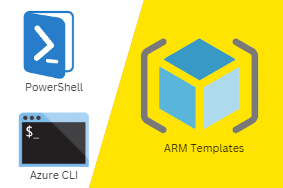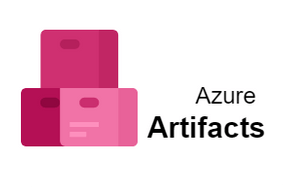VMware vSphere has become the go-to solution for virtualization admins around the world, so it’s no surprise that one of the most frequently asked questions we receive is if vSphere can be run on Amazon Web Services. In this article, we’ll take a look at some of the differences between AWS and vSphere, why you would choose to use AWS over vSphere, and why you might want to consider sticking with vSphere instead of switching over to AWS.
What is Amazon Web Services (AWS)?
Amazon Web Services, or AWS, is a cloud-computing platform that was first announced in 2006 and offers companies on-demand access to a huge selection of online services. While it’s primarily used for storing data, Amazon Web Services also hosts infrastructure platforms such as hosting servers and databases for websites or applications. The first two versions of Amazon Web Services were Simple Storage Service (S3) and Elastic Compute Cloud (EC2). According to Microsoft, Amazon Elastic Compute Cloud (Amazon EC2) is a web service that provides resizable compute capacity in the cloud. It is designed to make web-scale computing easier for developers. In essence, users can rent server time from Amazon rather than having to purchase and maintain expensive hardware themselves.
What Is VMware vSphere?
VMware ESXiTM is a hypervisor – software that enables multiple virtual machines to share physical server resources, as well as provides an operating system-independent platform. VMware ESXi runs directly on server hardware, independent of any operating system, and requires a 64-bit processor with Virtualization Extensions (Intel VT or AMD-V). AWS hosts a variant of VMware named Amazon EC2 Container Service (Amazon ECS) to provide a scalable host environment for applications called Docker containers. I’ll get into Docker shortly.
How Does Cloud Computing Affect Businesses?
There’s plenty of chatter about cloud computing and its effect on businesses today. One thing is certain: More companies are going to adopt cloud solutions. If your business isn’t using a cloud solution yet, it will soon. Whether it be for storage or disaster recovery, there’s no reason not to take advantage of a low-cost storage option that could help you save money and alleviate some stress at work. Even if your business is solely reliant on local storage solutions right now, don’t rule out transitioning to a cloud environment in the future—it might be beneficial sooner than you think.
Who Should Consider Using AWS/vSphere?
Users with smaller or fewer workloads might want to consider using a cloud platform like Amazon Web Services (AWS) because it’s often less expensive than traditional hardware. Many small businesses, for example, may have only one or two virtual machines (VMs) that can easily be moved to a cloud platform. The ability to scale up when your workload increases is also more cost-effective in some cases. If you’re ready to take advantage of AWS/vSphere but aren’t sure where to start, look into third-party tools that provide guidance on setting up an infrastructure in a cloud environment. VMware offers its own set of tools called VMware Cloud Foundation and Cisco sells products through its Meraki division; other solutions are available from partners including HPE, Dell and Lenovo.
What Are the Benefits of Choosing This Solution for Your Business?
You may have heard that cloud computing is great for saving money and resources. That’s true—if your business needs to rapidly increase or decrease its capacity at any given time, using Amazon Web Services or other cloud providers can help you achieve that goal without adding a ton of extra infrastructure to your office. You also won’t have to worry about maintaining those systems yourself, since they will be maintained by professionals in a data center owned by someone else. If that sounds like something your business could benefit from, keep reading to learn more about how cloud computing works and whether it might be right for your enterprise.
Where Should You Start with Running VMware ESXi in AWS EC2 Instances?
There are three main reasons why anyone would want to run VMware ESXi in AWS EC2 instances: Consolidation, Isolation and Cost. You might want to consolidate a number of physical servers into virtual ones, in order to reduce your operational expenditure (OPEX) because EC2 is significantly cheaper than running a dedicated set of physical servers. Similarly, you might decide that a public cloud such as Amazon Web Services (AWS) is more secure than your own data center for hosting your servers. With isolation comes security benefits; for example, by hosting virtual machines on an Amazon Elastic Compute Cloud (Amazon EC2), they’re less likely to be compromised by viruses or hackers because they’re operating in a completely separate environment.
How Do I Set Up, Configure, and Install VMware ESXi 6.5 in an Amazon Web Services Virtual Machine Instance (AWS EC2) With Logical Volume Manager (LVM)?
Step 1. Set up an Amazon Web Services (AWS) account. Step 2. Create an EC2 virtual machine instance in a VPC using one of your existing AWS accounts, or register a new AWS account for paying customers. Step 3. Create a custom image that includes VMware ESXi 6.5 and LVM tools required to setup LVM storage for your virtual machines running inside that EC2 instance. Step 4. Attach volumes (LUNs) from your existing storage to your newly created Amazon Web Services EC2 virtual machine instances by creating volume snapshots and mounting them as file systems in /mnt/disks/ directory. Step 5. Create a datastore or extend it with new data stores. Then add file systems to that datastore. Step 6. Configure your hostname and IP information inside your system configuration file (/etc/sysconfig/network). This tutorial shows how to create two network interfaces, configure networking with those two network interfaces and assign IP addresses to those interfaces depending on whether they are used for internal communications between virtual machines or external connections with Internet traffic going through NAT router on site where these instances are hosted. Step 7. Run VMware ESXi installation script and install vSphere management agent (vMA), which is provided as part of Linux distribution called Photon OS customized specifically for use with cloud environments such as Amazon EC2. In our example, we will use Ubuntu 14.04 LTS release (codenamed Trusty Tahr). Please note that it is possible to use other Linux distributions but some customization might be required, especially when you need to take advantage of newer hardware. Virtual appliance download page lists all available versions released over time if you want to try something different than Ubuntu 14.04 LTS release.. Step 8. The easiest way to customize vCenter Server Appliance is using built-in command line interface (VAMI) web interface. By default, VAMI console listens on TCP port 5480 so open that port in your firewall settings before proceeding further. Step 9. Once you have installed Photon OS operating system, update its packages and reboot server. Step 10. Follow previous tutorial to finish installing vSphere management agent software. Step 11. Add DNS records for your newly deployed VCSA VM and point them to private IP address assigned earlier by AWS during instance creation process. You can find more details about options used in installer script on dedicated section at end of installation guide here . Step 12. Your vCenter Server Appliance is ready for first login and initial configuration of platform services such as Single Sign On (SSO), inventory service, certificate authority (CA) server, etc. One thing to keep in mind is that there are no out-of-the box reports yet because various metrics and detailed statistics do not get tracked automatically; however, administrators can enable reporting feature using either internal method or by sending secure messages to third party solution like Splunk.



0 Comments